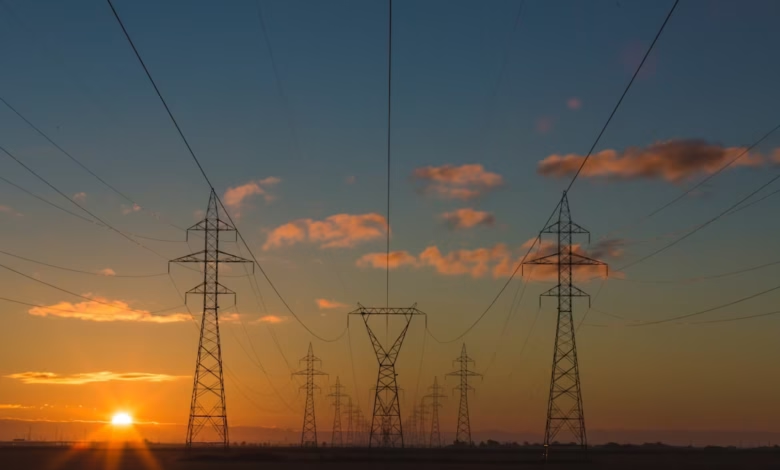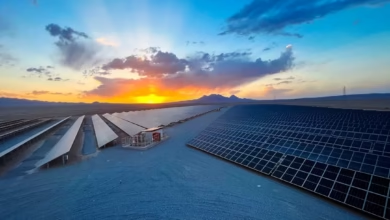Navigating Energy Investment: Key Trends and Innovations in Financing Renewable and Fossil Fuel Projects

As the world grapples with climate change and the pressing need for sustainable solutions, energy investment has emerged as a critical focus for governments, businesses, and individuals alike. The transition from fossil fuels to renewable energy sources is reshaping global energy markets, prompting innovative financing strategies for projects ranging from solar power and wind energy to nuclear energy and energy storage. In this article, we will explore the current landscape of energy investment, highlighting key trends in both renewable and fossil fuel sectors, and examining how energy policy and innovation play vital roles in shaping the economics of energy. We'll delve into the intricacies of financing energy projects, including smart grids and distributed energy systems, while also addressing the importance of energy efficiency and energy security in a rapidly changing environment. Join us as we navigate through the complexities of energy investment and uncover the future of energy economics in this dynamic landscape.
- 1. Navigating Energy Investment: Key Trends in Renewable Energy and Fossil Fuels
- 2. Financing the Future: Exploring Energy Projects from Solar Power to Smart Grids
- 3. Energy Economics in Transition: The Role of Policy and Innovation in Shaping Global Energy Markets
1. Navigating Energy Investment: Key Trends in Renewable Energy and Fossil Fuels
The landscape of energy investment is evolving rapidly, shaped by significant trends in both renewable energy and fossil fuels. As the world grapples with climate change and the urgent need for energy security, the focus has shifted towards sustainable solutions while still recognizing the role of traditional energy sources in the transition phase.
In recent years, renewable energy has witnessed unprecedented growth, driven by technological advancements and supportive energy policies. Solar power and wind energy, in particular, have become frontrunners in the energy markets, attracting substantial investments. The decreasing costs of solar panels and wind turbines have made them increasingly competitive with fossil fuels, leading to a surge in energy efficiency initiatives and energy innovations. Furthermore, energy storage technologies, such as batteries, are essential for managing the intermittent nature of renewable sources, ensuring a reliable energy supply.
Simultaneously, fossil fuels continue to play a critical role in the global energy landscape. Despite the push for green energy, fossil fuels remain integral for many economies, particularly in regions heavily reliant on oil and gas exports. Investments in carbon capture technologies aim to mitigate the environmental impact of fossil fuel usage, allowing for a more sustainable approach while energy transitions take place. Nuclear energy also presents a significant opportunity, offering low-carbon thermal energy solutions to meet growing demand without exacerbating climate change.
The rise of electric vehicles is another key trend reshaping energy investment. As countries implement stricter emissions regulations and promote energy-efficient transportation, investments in charging infrastructure and renewable energy sources to power these vehicles are gaining momentum. Moreover, the development of smart grids is enhancing energy transportation and distribution, enabling the integration of distributed energy resources while optimizing energy management.
Energy R&D continues to be vital in addressing the challenges of transitioning to a more sustainable energy system. Innovations in hydrogen energy and bioenergy hold promise for diversifying energy sources and enhancing energy security. These developments are particularly significant in regions where traditional energy exports are declining, necessitating a shift to alternative energy imports.
As global energy trends evolve, investors must navigate this complex landscape, balancing opportunities in both renewable energy and fossil fuels. The journey towards a sustainable energy future will require a multifaceted approach, incorporating diverse energy solutions to achieve a resilient and efficient energy economy. The success of energy investment hinges on understanding these trends and adapting to the changing dynamics of the energy sector.
2. Financing the Future: Exploring Energy Projects from Solar Power to Smart Grids
The energy landscape is undergoing a significant transformation as we move towards a more sustainable and efficient future. Financing energy projects has become crucial in this transition, with investments spanning a wide array of technologies, from solar power and wind energy to smart grids and energy storage solutions.
Solar power continues to lead the charge in renewable energy investments, driven by declining costs and increasing efficiency. As countries strive to meet climate change goals, solar projects are attracting both public and private funding to enhance capacity and expand access. Similarly, wind energy has gained substantial traction, with offshore energy projects emerging as a promising frontier for investment, capitalizing on higher wind speeds and less land use.
Energy storage technologies are vital for maximizing the potential of renewable energy sources. With fluctuations in energy production, particularly from solar and wind, investments in batteries and other energy storage solutions are critical for ensuring energy security and efficiency. These innovations enable a more reliable energy supply, reduce reliance on fossil fuels, and enhance overall energy markets.
Moreover, smart grids are revolutionizing how energy is distributed and consumed. By integrating advanced technology, smart grids provide real-time data that improve energy efficiency and facilitate the management of distributed energy resources. Investments in smart grid infrastructure are essential for supporting the energy transition, as they enable better demand response and integration of electric vehicles into the energy framework.
Hydropower remains a significant player in the energy sector, providing a stable source of thermal energy and contributing to the balance of energy imports and exports. Additionally, bioenergy and hydrogen energy are gaining momentum, with projects focusing on carbon capture and sustainable fuel alternatives contributing to a diversified energy portfolio.
As global energy trends evolve, energy policies are increasingly favoring investments in green energy initiatives. This shift not only enhances energy efficiency but also fosters innovation in energy R&D, promoting advancements that align with sustainable development goals. The emphasis on energy economics is paramount, as stakeholders evaluate the financial viability of various projects within the context of climate change and energy transition.
In summary, financing energy projects requires a multifaceted approach that embraces diverse technologies and strategies. By investing in renewable energy, smart grids, and energy storage, stakeholders can position themselves to thrive in a rapidly changing energy landscape while contributing to a sustainable future.
3. Energy Economics in Transition: The Role of Policy and Innovation in Shaping Global Energy Markets
The landscape of energy economics is undergoing a significant transition, influenced by a combination of policy changes and innovative technologies. As nations strive to meet climate goals, the shift from fossil fuels to renewable energy sources is accelerating, reshaping global energy markets. This transition is not just about changing the fuel mix; it encompasses advancements in energy efficiency, energy storage, and the development of smart grids that enhance energy security and reliability.
Energy policy plays a pivotal role in guiding this shift. Governments worldwide are implementing regulations and incentives that promote the adoption of green energy technologies, such as solar power, wind energy, and hydropower. These policies not only encourage investment in renewable energy projects but also foster innovation in energy R&D, leading to breakthroughs in carbon capture and hydrogen energy production. As a result, energy markets are witnessing an influx of new players, including startups focused on distributed energy solutions and electric vehicles.
The economic implications of this energy transition are profound. Traditional energy markets, heavily reliant on fossil fuels, are facing disruptions as investments flow toward sustainable energy projects. This shift is creating new opportunities for energy exports and imports, particularly for countries rich in renewable resources. For instance, regions that invest in offshore energy and bioenergy can become key players in the global energy landscape, leveraging their natural advantages to drive economic growth.
Moreover, the integration of innovative technologies into energy transportation systems is enhancing the overall efficiency and effectiveness of energy markets. Smart grids, for example, facilitate better energy management, allowing for real-time data analysis and improved demand response. This technological evolution supports a more resilient energy infrastructure that can adapt to fluctuations in energy supply and demand.
In conclusion, the interplay of energy policy and innovation is vital in shaping the future of global energy economics. As we move toward a more sustainable energy system, the focus will increasingly shift to energy investments that prioritize renewable energy and energy efficiency, all while addressing the challenges posed by climate change. The ongoing energy transition is not just a necessity; it is an opportunity to redefine our energy markets for a more sustainable and secure future.
In conclusion, the landscape of energy investment is rapidly evolving, driven by a mix of renewable energy advancements and the ongoing reliance on fossil fuels. As we navigate the complexities of this transition, it is essential to recognize the pivotal role financing plays in shaping projects across various sectors, from solar power and wind energy to nuclear energy and energy storage solutions. The integration of energy efficiency measures and smart grids is transforming how we approach energy economics, creating a more resilient and sustainable energy market.
As global energy trends shift towards greener alternatives, energy policy and innovation become critical in fostering an environment conducive to investment in clean energy technologies, including hydropower, bioenergy, and carbon capture initiatives. Furthermore, the interplay between energy imports and exports underscores the importance of energy security in a world grappling with climate change.
Investors and stakeholders must remain vigilant, adapting to the dynamic nature of energy markets while prioritizing energy R&D to drive the development of distributed energy systems and innovative solutions such as hydrogen energy and electric vehicles. By embracing these changes, we can support a successful energy transition that not only meets current demand but also paves the way for a sustainable future. Ultimately, the commitment to investing in diversified energy projects will be key to unlocking the potential of green energy and ensuring a stable energy landscape for generations to come.





